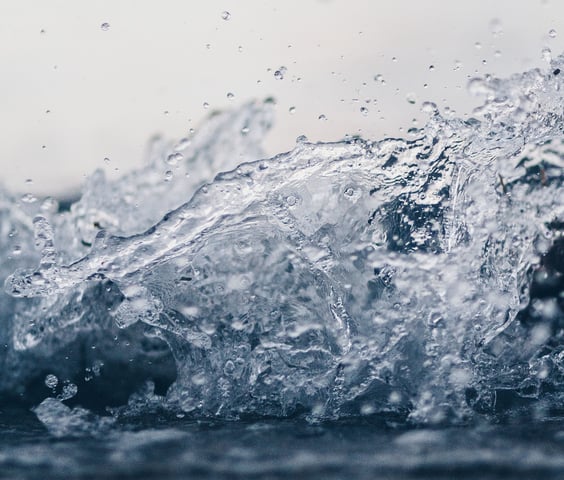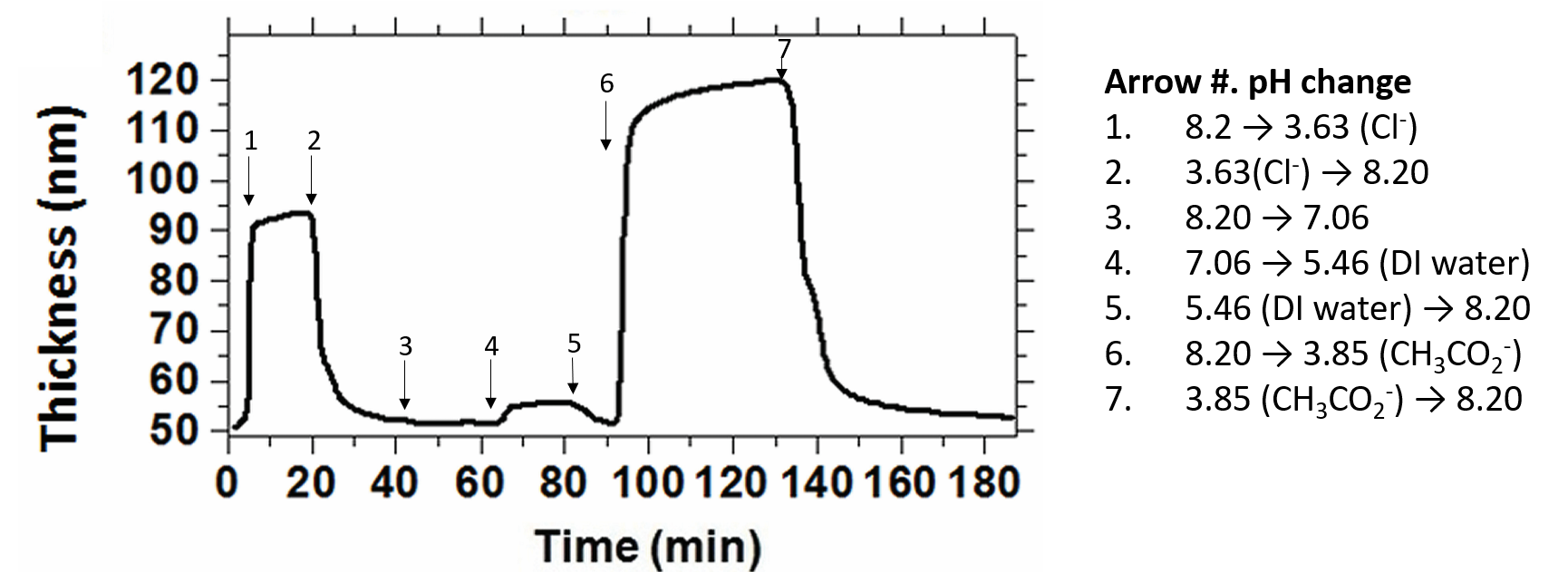
Polymer brushes, polyelectrolyte multilayers and hydrogels are typically used to achieve desirable properties such as biocompatibility, antifouling properties and drug delivery capabilities. Layer conformation and the degree of hydration are key parameters influencing the interfacial properties. Here we show a straightforward way to measure the transitions between hydrated and dehydrated states i.e. the swelling and collapse.
The transition between hydrated and dehydrated states of polymer brush layers and other thin films can be assessed by for example QCM-D, which will sense the water uptake and release as changes in mass.
As an example, the swelling and collapse of polymer brushes made of chitosan have been analyzed with QCM-D. The conformation of the chitosan brush depends both on pH and counter-anion size. At low pH, the brush is water-soluble while at pH above 6.5, it is a collapsed coil and insoluble in water.
In this experiment, chitosan was grafted onto the QCM-D sensors. The brush layer was then exposed to solutions of different pH and counter-anion size while the layer thickness was measured.
The results of the measurement are shown in Fig. 1. Looking at the plot, it is noted that the layer swells at low pH and contracts at high pH. It is also noted that the transition between the swollen and collapsed states are reversible and that the larger counter-anions induce more swelling than the smaller counter-anions.

Figure 11. The graph shows how the thickness of the chitosan brush varies when exposed to solutions of different pH and counter-anion type. The brush swells at low pH and contracts at high pH.
To tailor the interfacial properties of polymer-based materials, such as polymer brushes, so that they support the desired interaction with the environment, the structure and structural changes of the layer must be characterized. Such characterization is straightforward with for example QCM-D, which detects changes in the degree of hydration and transitions between swollen and collapsed states.
Download the application note to read the full study.
1Figures are reproduced from Ref. 1 with permission from The Royal Society of Chemistry.
Cover photo by Samara Doole on Unsplash
Read about how QSense QCM-D was used in the development of a new thermoresponsive polymer brush with antifouling properties for biomedical applications.
Find out more about how to use QCM-D for polymer characterization and to analyze polymer interactions at surfaces.
Read about how polyelectrolyte multilayer build-up, and the resulting multilayer, can be characterized with QSense QCM-D technology.
The versatility of polyelectrolyte multilayers, PEMs, is high, which makes them interesting for e.g. biomedical applications. The functionality is largely determined by the layer properties, which needs to be understood to be tailored. Here, we show how PEMs can be characterized with QCM-D.
Polymers and polyelectrolytes of various conformations are used in many applications where there is a need to tailor the interfacial properties to promote a certain interaction with the surrounding environment. Here we show how polymer layer crosslinking and collapse can be characterized.
Thanks to the complementary information combinatorial QCM-D and ellipsometry can provide, these two allow one to simultaneously monitor both polymer brush swelling and deswelling behavior, as well as attachment and detachment of protein.
The webinar will illustrate the benefit of using two complementary technologies simultaneously to characterize thin film build-up and behavior.
Gabriel Ohlsson, Ph.D., is a former employee at Biolin Scientific where he initially held a position as an application scientist and later as a sales manager. Dr. Ohlsson did his Ph.D. in engineering physics and has spent a lot of time developing sensing technologies for soft matter material applications. One of his main tools during this research has been the QCM-D technology.
